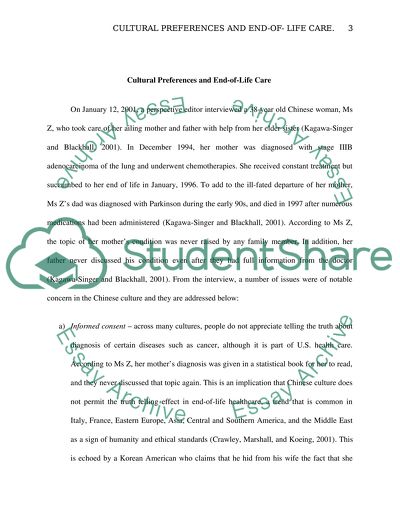Cultural Preferences and End-of-Life Care Essay Example | Topics and Well Written Essays - 500 words. Retrieved from https://studentshare.org/health-sciences-medicine/1601122-cultural-preferences-and-end-of-life-care
Cultural Preferences and End-of-Life Care Essay Example | Topics and Well Written Essays - 500 Words. https://studentshare.org/health-sciences-medicine/1601122-cultural-preferences-and-end-of-life-care.


